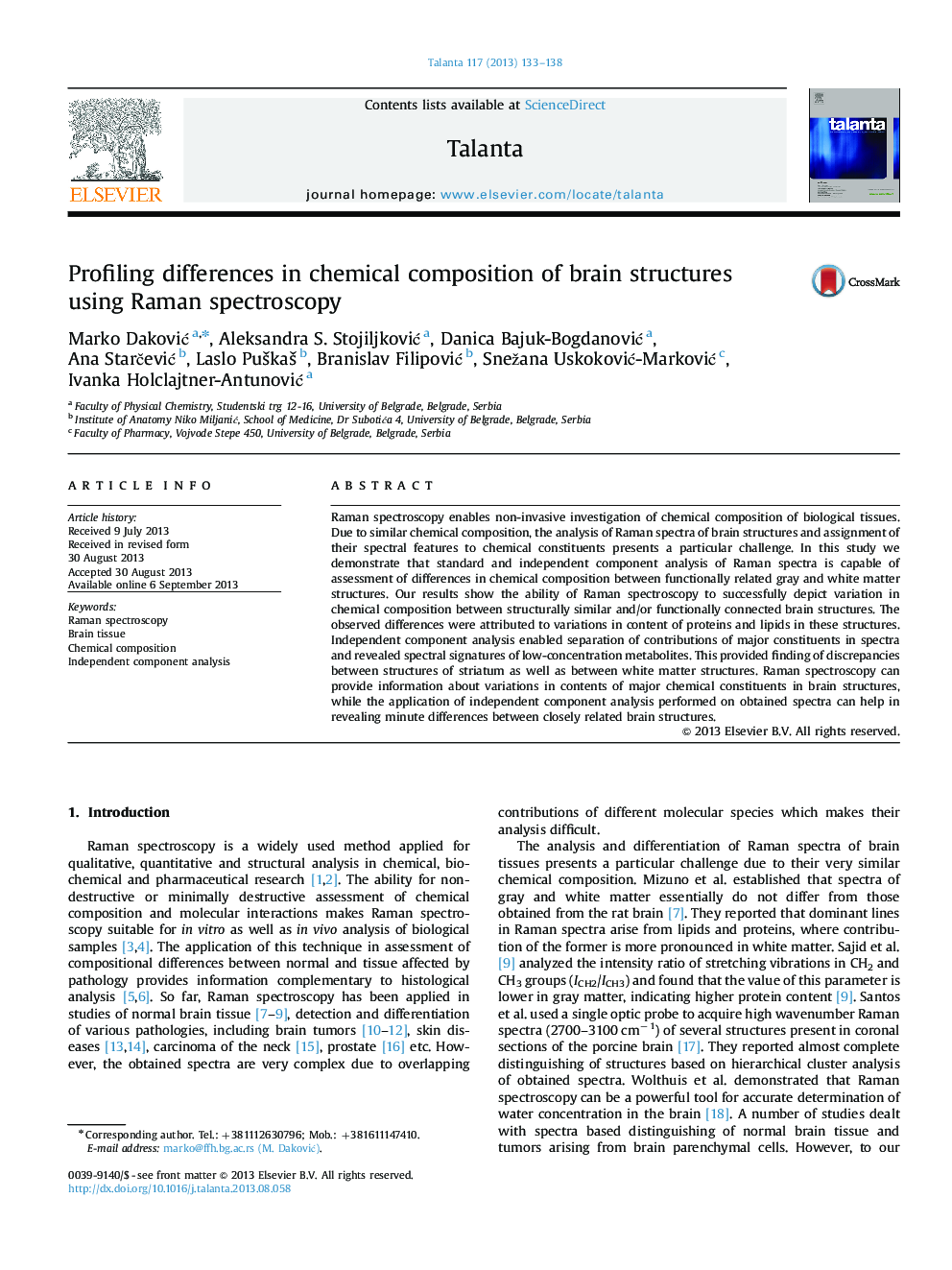| Article ID | Journal | Published Year | Pages | File Type |
|---|---|---|---|---|
| 7681428 | Talanta | 2013 | 6 Pages |
Abstract
Raman spectroscopy enables non-invasive investigation of chemical composition of biological tissues. Due to similar chemical composition, the analysis of Raman spectra of brain structures and assignment of their spectral features to chemical constituents presents a particular challenge. In this study we demonstrate that standard and independent component analysis of Raman spectra is capable of assessment of differences in chemical composition between functionally related gray and white matter structures. Our results show the ability of Raman spectroscopy to successfully depict variation in chemical composition between structurally similar and/or functionally connected brain structures. The observed differences were attributed to variations in content of proteins and lipids in these structures. Independent component analysis enabled separation of contributions of major constituents in spectra and revealed spectral signatures of low-concentration metabolites. This provided finding of discrepancies between structures of striatum as well as between white matter structures. Raman spectroscopy can provide information about variations in contents of major chemical constituents in brain structures, while the application of independent component analysis performed on obtained spectra can help in revealing minute differences between closely related brain structures.
Related Topics
Physical Sciences and Engineering
Chemistry
Analytical Chemistry
Authors
Marko DakoviÄ, Aleksandra S. StojiljkoviÄ, Danica Bajuk-BogdanoviÄ, Ana StarÄeviÄ, Laslo PuÅ¡kaÅ¡, Branislav FilipoviÄ, Snežana UskokoviÄ-MarkoviÄ, Ivanka Holclajtner-AntunoviÄ,
